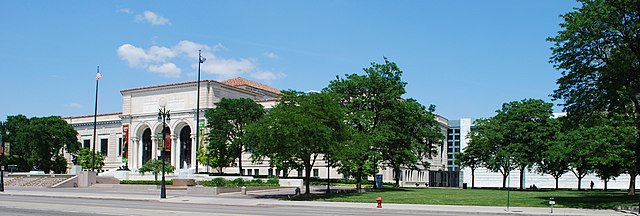Detroit Revealed: Photographs 2000-2010, on view now through April 29, 2012 at the Detroit Institute of Arts, examines the ups and downs of life in the Motor City over the past decade. Featuring works by eight critically-acclaimed artists, the exhibition goes beyond typical cityscapes to include portraits, industrialized action shots, and two video installations.
Since the fall of the nation’s economy in the late 2000s, Detroit has often come into the limelight as an allegorical projection of the country’s state of being, as if the decline of the auto industry foretold the greater troubles to come. A 2010 Dateline NBC special on the Detroit painted a disparaging picture, showing helplessness and ruin among both the people and the infrastructure of the city. But the attention wasn’t all negative; in fact, many turned to Detroit as a symbol of hope. The New York Times and other media outlets continually published stories highlighting the positive changes in the Motor City: the slow, but optimistic turnaround of the auto industry, the arts scene that continued to thrive even at the worst of the Recession; the incorporation of new, independent businesses; and the community gardens springing up in abandoned lots.
With all the recent media chatter, it’s difficult to find a neutral standpoint on Detroit. Yet Detroit Revealed succeeds in keeping an unbiased perspective, showcasing images of both blight and creation, allowing the viewer to form his or her own conclusions about the city.
A quick search on Flickr will render page after page of images of Detroit’s abandoned buildings; the subject has become so cliché that many Detroiters snarkily refer to such photography as “Ruin Porn.” Locally-based artist Scott Hocking, however, explores much deeper with his photographs of the dead and dying buildings in the city. He goes inside abandoned structures, climbs on their rooftops, and builds installations on-site, resulting in images that literally go above and beyond the typical perspective. Through his lens, Detroit’s blighted buildings take on an eerie resemblance to the ruins of Ancient Greece and Rome.
Perhaps most memorable in the exhibition are the outdoor shots, which capture the surreal oddness found in many pockets of the city. Photographer Carlos Diaz’s images of residential backyards in Detroit’s Mexicantown neighborhood show a bursting sense of liveliness: flowers, shrines, ornaments and statues, sharp in contrast to the confining wrought-iron gates and chain link fences that guard each home. It’s as emblematic as Detroit itself.
Also included in the exhibition is an alcove of smaller, mostly black-and-white photos of Detroit from the early 1900s through the 1970s. The images, showing the city in its boom years, don’t exactly contrast with the more recent images of Detroit in decline, as one might expect. Rather, they highlight the same spirit of Detroit that still persists today.

